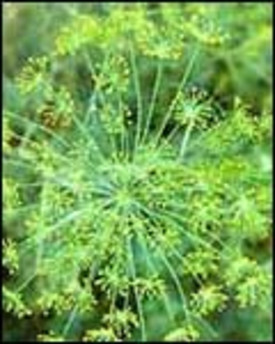|
And with good reason! In addition to their obvious role in cooking, herbs are also attractive and add color, interesting textures and forms, and rich or subtle fragrances to the home and garden.
Uses for Herbs
The most popular use for herbs is in cooking, and nearly every recipe can be enhanced with the addition of appropriate herbs. Can you imagine tomato sauce without oregano? Thanksgiving stuffing without sage? Some dishes are defined by the herbs they contain—pesto without basil just isn’t pesto! Herbs have many other uses as well. Many types make wonderful teas, either as individuals or combined in blends. Chamomile makes a soothing tea for unwinding after a hard day. Bee balm (Monarda) makes a tangy tea with citrus overtones. And in addition to being tasty, mint teas aid in digestion. Many herbs are also believed to have medicinal properties. The echinacea that has become popular as a cold remedy is extracted from the purple coneflower, a common garden perennial. Of course many gardeners grow herbs simply because they are attractive and durable plants. Bee balm not only makes a tasty tea, it is also a reliable perennial with lovely red, pink, or white flowers. And chamomile’s daisly-like blooms brighten up any sunny border.
Where to Plant
Plant herbs where you can get to them easily for frequent harvesting, especially if you plan to use them in cooking. Consider planting a special kitchen garden near the house, so you can readily harvest herbs, greens, and other frequently-used crops. You can also grow herbs in containers or even window boxes. Most herbs prefer full sun—at least 6 hours per day. Herbs that will tolerate some light shade include chives, cilantro, dill, and mint. Remember that if you plant perennial herbs in the vegetable garden, keep them in a separate section so you’ll be sure to avoid them during spring and fall tilling.
Types of Herbs
Like all garden plants, herbs can be categorized as annual, perennial, or biennial. Annual plants grow for only one season and so must be planted each spring. Perennials live for several years. Their foliage dies back in the fall, but the roots overwinter and resume growth the following spring. And biennials grow for two years, growing foliage the first season, overwintering, then forming seeds and dying back at the end of the second season. Annual Herbs basil chamomile cilantro cumin dill fennel catnip chives lavender lemon balm lovage marjoram mint oregano rosemary sage tarragon thyme Perennial Herbs* catnip chives lavender lemon balm lovage marjoram mint oregano rosemary sage tarragon thyme *These are not all hardy in all regions of the country. Check zone ratings. Parsley is one of the few common herbs that is a biennial. However, unless you want to harvest the seed, you can treat it like an annual and plant new plants each season.
Soil Requirements
In general, herbs prefer a moderately rich soil. An overly rich soil (or excessive fertilizing) can lead to vigorous growth. However, many people find that the flavor of overfertilized herbs is bland, probably due to reduced essential oil content. The soil in your herb garden should have excellent drainage. If yours doesn’t, consider growing your herbs in raised beds or containers.
Caring for Herb Plants
Most herbs will thrive with about an inch of water a week, similar to other vegetable plants. Herbs in raised beds and containers will dry out more quickly than those planted directly in the garden and may need more frequent watering. Keep garden beds weeded, especially early in the season as plants are getting established. Once established, most herb plants are remarkably resistant to insect and disease attack. The oils that give them their aroma and flavor likely evolve to repel pests. However, keep an eye out for insects such as aphids, and diseases such as powdery mildew.
Harvesting Herbs
Harvest herbs by cutting back a shoot to just above a leaf. This will both provide you with a harvest and encourage nice, bushy growth. In general, an herb’s flavor is most prounounced when it is harvested just before the plant begins to flower.
Credit: National Gardening Association





























